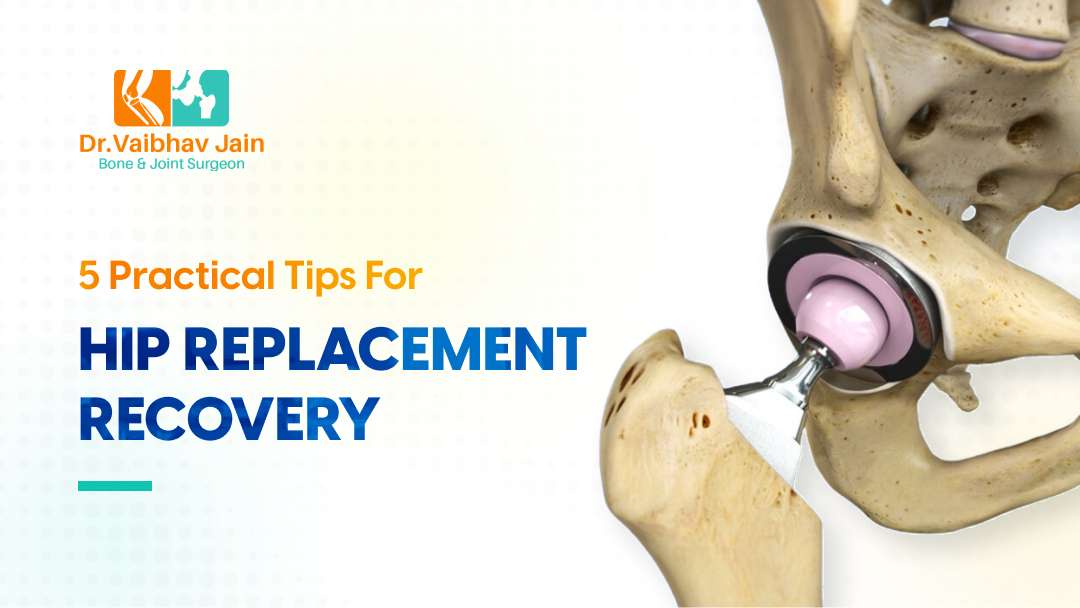Knee replacement surgery is a major orthopaedic procedure that can greatly improve mobility, reduce pain, and enhance the overall quality of life for those suffering from knee problems. While the surgery itself is a critical step in regaining mobility, the real work begins after the procedure.
One of the most important factors in achieving a successful recovery is exercise. Exercise after knee replacement is essential to help regain strength, flexibility, and range of motion in the affected knee.
In this blog post, we will discuss the importance of exercise after knee replacement surgeries, the recommended exercises, and tips for incorporating exercise into your recovery plan.
Importance Of Exercise After Knee Replacement Surgery:
Exercise plays a crucial role in the recovery process after knee implant. Regular exercise helps to strengthen the muscles around the knee joint, increase flexibility, and promote blood flow to the affected area. Exercise can also help to reduce swelling and inflammation, prevent blood clots, and improve overall mobility.
Types Of Exercises That Are Recommended:
Your physical therapist will work with you to develop a customized exercise program that is tailored to your individual needs and goals. Some of the exercises that may be recommended after knee replacement include:
- Range of motion exercises: These exercises involve moving the knee joint in different directions to increase flexibility and reduce stiffness.
- Strengthening exercises: These exercises focus on building strength in the muscles surrounding the knee joint. Examples include leg raises, wall squats, and heel slides.
- Aerobic exercises: These exercises are aimed at improving cardiovascular fitness and can include activities such as walking, cycling, or swimming.
- Balance and stability exercises: These exercises are designed to improve balance and prevent falls, which is particularly important for older adults who have undergone knee replacement surgery.
Learn about the Diet Plan After Knee Replacement Surgery
It is important to remember that each person’s recovery is unique, and your exercise program should be tailored to your individual needs and abilities. Your orthopaedic surgeon or physical therapist can help you develop an exercise program that is safe and effective for you.
Tips For Incorporating Exercise Into Your Recovery Plan:
It is important to follow your physical therapist’s instructions and progress your exercise program as directed. Some tips for incorporating exercise into your recovery plan include:
- Start slowly: Begin with gentle exercises that are within your range of motion and gradually increase the intensity and duration as you progress.
- Follow your physical therapist’s instructions: Your physical therapist will provide you with specific exercises to do at home. Be sure to follow their instructions closely to avoid injury.
- Make it a habit: Try to incorporate exercise into your daily routine. Set aside a specific time each day for your exercises and make it a priority.
- Find a workout buddy: Having a friend or family member join you in your exercise routine can help keep you motivated and make it more enjoyable.
- Mix it up: Incorporate a variety of exercises into your routine to prevent boredom and work different muscle groups.
- Listen to your body: If you experience pain or discomfort during exercise, stop and rest. It is important to listen to your body and not push yourself too hard.
- Stay hydrated: Drink plenty of water before, during, and after exercise to help prevent dehydration.
Remember, exercise is an important part of your recovery plan after knee replacement surgery. By incorporating these tips into your routine, you can help speed up your recovery, reduce pain, and improve your overall mobility.
Concussions
In conclusion, exercise after knee replacement is essential to achieving a successful recovery. By following your physical therapist’s instructions and incorporating exercise into your daily routine, you can regain strength, mobility, and overall quality of life. Remember to always listen to your body and progress your exercise program as directed to ensure a safe and effective recovery.
Frequently Asked Questions
Exercise is crucial for proper recovery after knee replacement surgery. It can help improve range of motion, reduce swelling and stiffness, and increase overall strength and mobility in the affected knee.
Low-impact exercises such as walking, cycling, and swimming are recommended after knee replacement surgery. Specific exercises recommended by your physical therapist can also be incorporated into your routine.
It is important to follow your surgeon’s and physical therapist’s instructions regarding when to start exercising after knee replacement surgery. Typically, patients can begin with gentle exercises within a few days of the surgery and gradually progress as the knee heals.
It is important to exercise regularly to promote proper healing and recovery after knee replacement surgery. Your physical therapist will provide you with a specific exercise plan and recommended frequency based on your individual needs.
Yes, exercise can help prevent complications such as blood clots, joint stiffness, and muscle weakness after knee replacement surgery. Regular exercise can also help improve overall cardiovascular health and reduce the risk of future joint problems.
Exercise should be incorporated into your routine as part of your long-term maintenance plan after knee replacement surgery. It is important to continue exercising regularly to maintain strength and mobility in the affected knee and prevent future joint problems.





